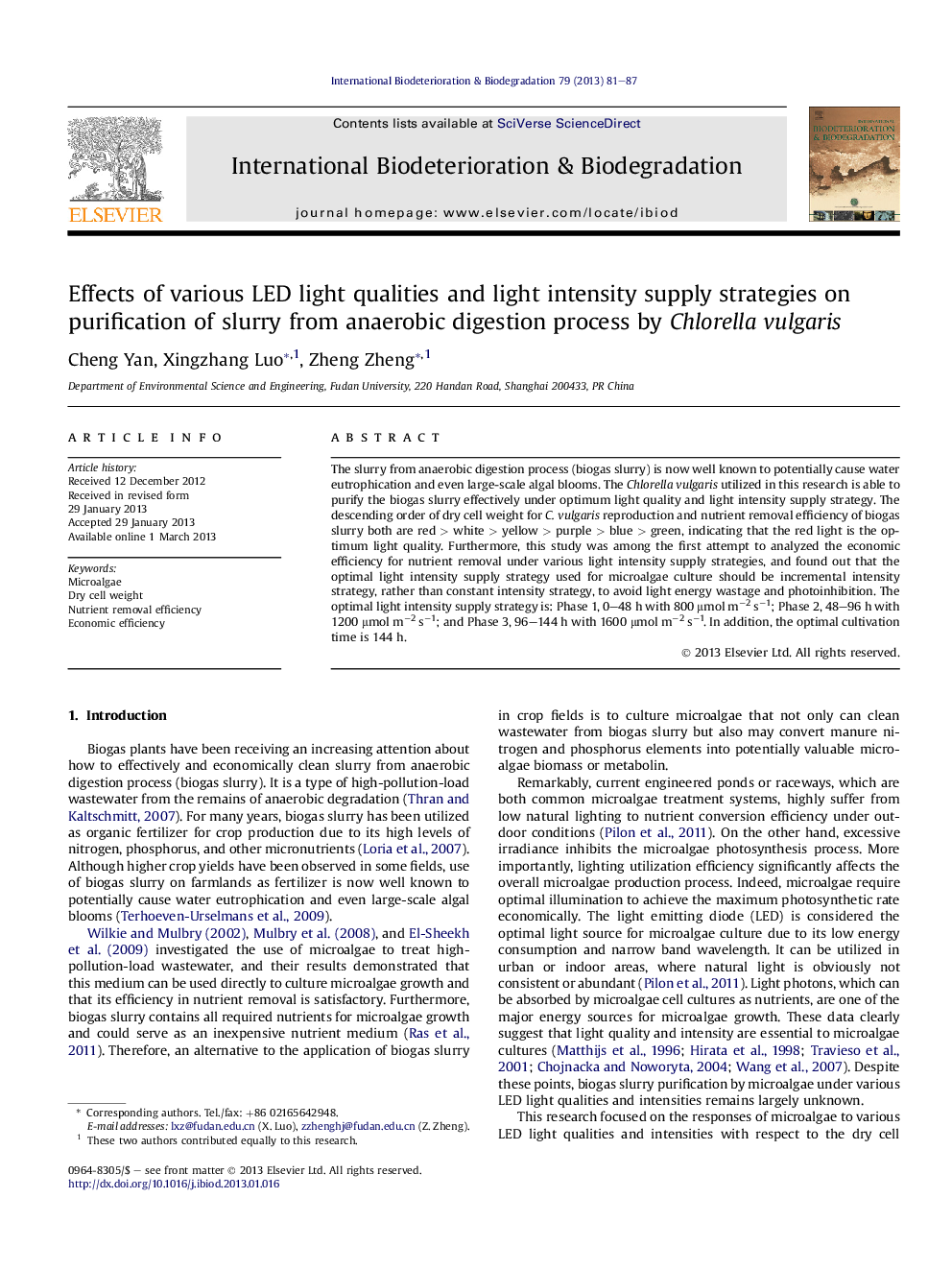| Article ID | Journal | Published Year | Pages | File Type |
|---|---|---|---|---|
| 4365066 | International Biodeterioration & Biodegradation | 2013 | 7 Pages |
The slurry from anaerobic digestion process (biogas slurry) is now well known to potentially cause water eutrophication and even large-scale algal blooms. The Chlorella vulgaris utilized in this research is able to purify the biogas slurry effectively under optimum light quality and light intensity supply strategy. The descending order of dry cell weight for C. vulgaris reproduction and nutrient removal efficiency of biogas slurry both are red > white > yellow > purple > blue > green, indicating that the red light is the optimum light quality. Furthermore, this study was among the first attempt to analyzed the economic efficiency for nutrient removal under various light intensity supply strategies, and found out that the optimal light intensity supply strategy used for microalgae culture should be incremental intensity strategy, rather than constant intensity strategy, to avoid light energy wastage and photoinhibition. The optimal light intensity supply strategy is: Phase 1, 0–48 h with 800 μmol m−2 s−1; Phase 2, 48–96 h with 1200 μmol m−2 s−1; and Phase 3, 96–144 h with 1600 μmol m−2 s−1. In addition, the optimal cultivation time is 144 h.
► The order of dry cell weight is red > white > yellow > purple > blue > green. ► The order of nutrient removal is red > white > yellow > purple > blue > green. ► The optimum light quality in this research is determined as red light. ► The optimum light intensity supply strategy is incremental intensity strategy. ► The optimal cultivation time is 144 h.
